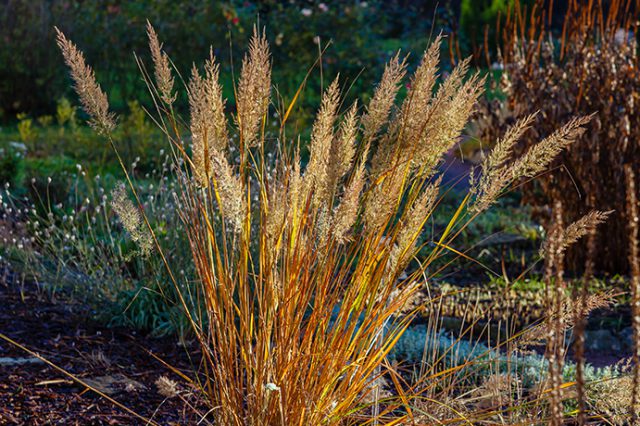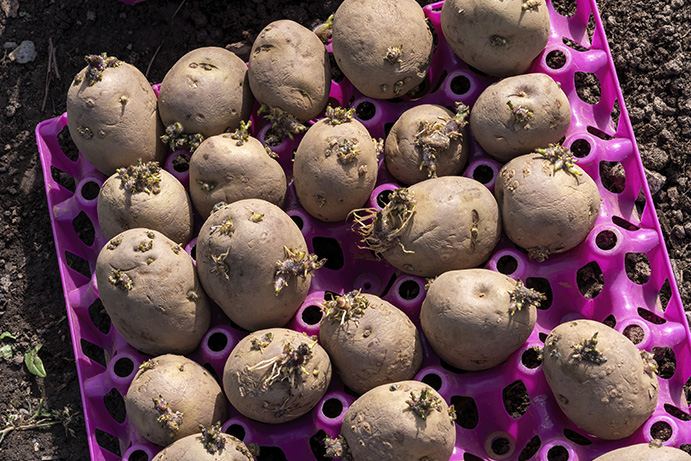January 31, 2022 by Cherry Lane

February Gardening To-Do List
By Rachael – Content Editor
Published 31st January 2022
There is still a chill in the air but we are seeing more of that glorious winter sunshine. With plenty of prep needed in the garden ready for spring, there is no better time to pop on your winter woollies and get outdoors. Cut back ornamental grasses. Ornamental grasses come in two varieties, deciduous and evergreen. Towards the end of winter, the deciduous varieties, such as deschampia, will start to become straw coloured and dry. These dried out stems need to be cut back to ground level, but make sure not to cut any fresh green stems. Evergreen varieties, such as Festuca californica, require a gentler approach. You can sift through and remove any old leaves and give them a tidy over, but don’t cut them to ground level. Plant ‘in the green’ snowdrops (with leaves!) Whilst it is most common to plant bulbs that have been dried out, snowdrop bulbs rarely survive this process. Therefore, it is better to plant them once they have already started growing. Snowdrop growers will lift and separate new bulbs with shoots attached, so you can take home bunches of snowdrops and spread them out evenly in your flower bed. Deadhead winter pansy and viola. Pansies need to be kept well-groomed, especially at the end of the flowering period. If a pansy is left to go to seed, it will stop producing flowers. Pinch off the heads of your pansies and violas just above the petals to encourage a bountiful future growth. Remove old stems on herbaceous perennials. Herbaceous perennials, such as lupine and delphinium, are types of bedding plants that return each year for the summer months. Although they die down in the winter, the roots remain alive and shoot a fresh plant back up again the following spring. You may be tempted to prune herbaceous perennials in autumn, but it’s much better left until later in winter. This is because varieties such as foxgloves and miscanthus are a great food source for native wildlife in colder months. Pot up containers with hardy spring bedding such as primroses and forget-me-nots. Both primroses and forget-me-nots are very well accustomed to life in a container. To give them the best start, plant them in good quality soil that is moist yet well-drained. Adding a layer of mulch will help them retain moisture in between regular watering. Place your plant pots or containers somewhere that’s lightly shaded but has access to plenty of sunshine. Continue to plant trees and shrubs. February is the perfect time to plant shrubs like Junipers, Yuccas and Pines. Make sure to plant your shrub at the same depth as it was in the pot, careful not to cover any stems. Water them twice weekly as a minimum for the first two years. February is also ideal for planting many species of tree, such as Beech trees, Hazel trees and Blackthorn trees. Be sure to leave adequate space for future growth. Prepare seedbeds for spring vegetable sowings. It won’t be long until we can start sowing vegetables that go straight in the soil, so let’s get ready. Preparing your seedbed before planting will ensure your seeds have the very best start. Give the ground a good work over with a garden spade or fork, overturning the first six or seven inches. Sift through the soil and remove any debris, rocks or weeds (including the roots.). Add in some good quality fertilizer or compost to restore the ground, creating a nutritious home for any future seedlings. Chit first-early potato tubers such as ‘foremost’ by standing them in trays in a frost-free place. Seed potatoes will now be in stores, ready to be planted and grown in time for summer salads. Chitting is a process that encourages the seed potato tuber to start sprouting before planting. This needs to be done around six weeks before you intend to plant your tubers. When looking at the seed potato, find the end which is most rounded and has the most ‘eyes’. Keep this end facing upwards and stand the tubers in a tray, storing them somewhere away from the frosts. Once the shoots are around 2cm long, they can be planted outdoors.




